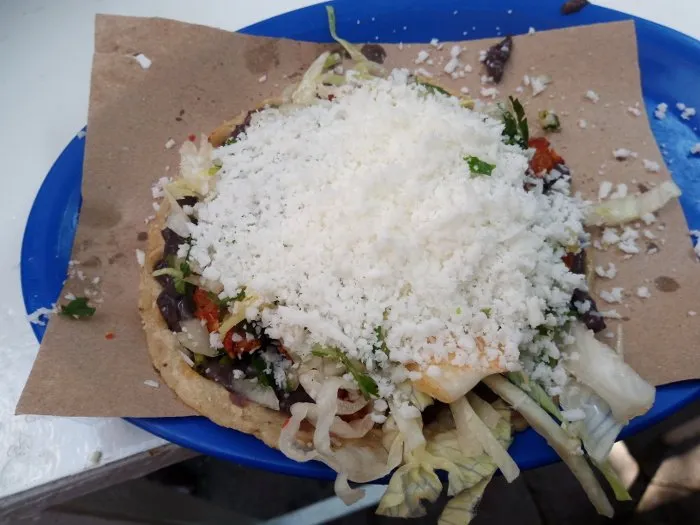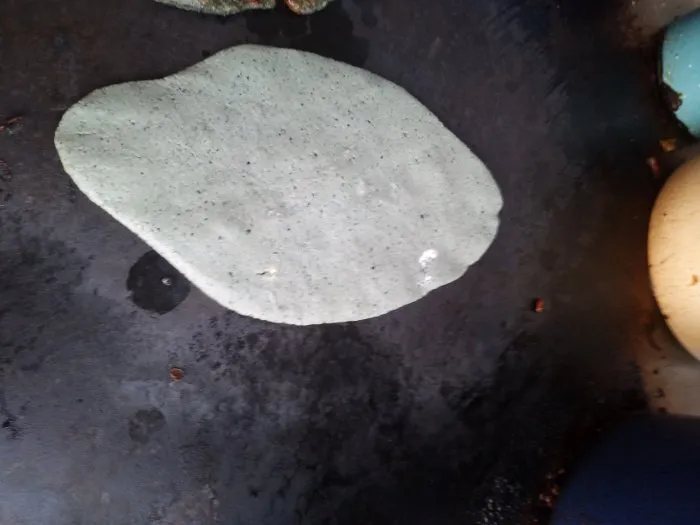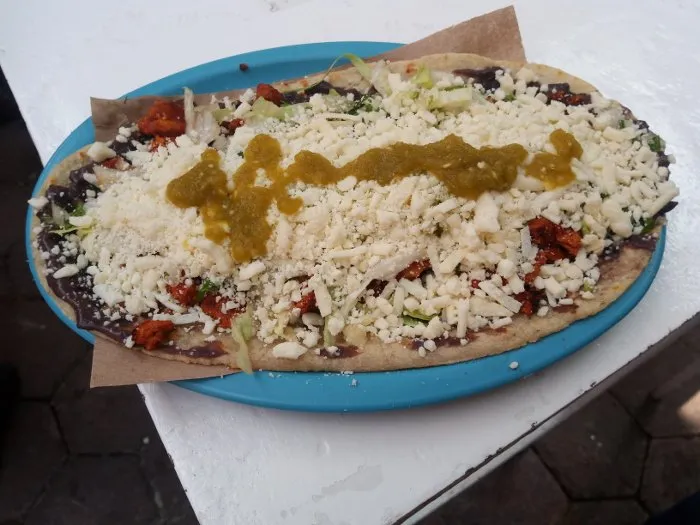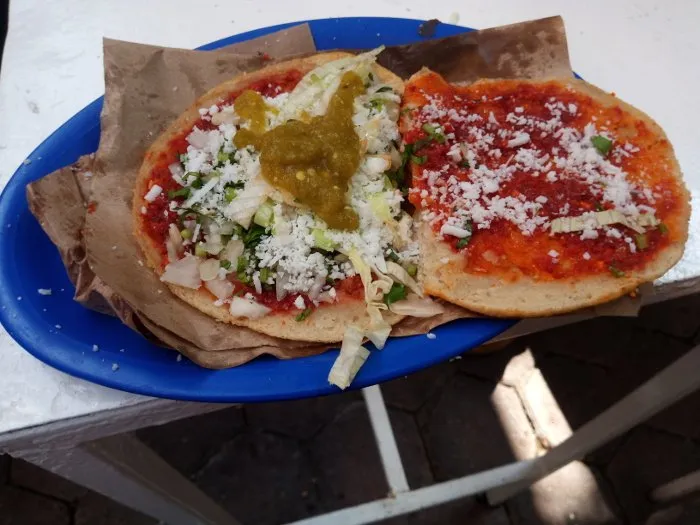Continuing with my series on Mexican food, I feel I should address a couple of dishes that can easily be confused for being so similar. These are the gordita, the tlacoyo, the huarache, and the sope. Essentially they're all stuffed tortillas with only minimal differences. So let's see what they are:
All Things Start With Masa
Well, at least the myriad of Mexican dishes based on corn-flour dough. It's the same material that tortillas are made from, but instead of pressing them flat, in these dishes they are kept thick. The idea is that they will be filled and/or covered with toppings, usually involving a salsa, and this way the wetness is not going to dissolve the item, like it would a thin tortilla.
Sope - Don't Call it a Mexican Pizza
The simplest variant of these four dishes is probably the sope. It's really just a thick tortilla, the size of the palm of your hand, fried in oil and covered with a variety of toppings. Tortillas can be fried too, turning them into tostadas (also known as corn chips in English), but due to their thinness they become crunchy and brittle. A sope has sufficient substance that frying gives it a firm outside, while keeping it soft on the inside.

Once fried, a sope can support cooked meat, chorizo, chicharron, fried beans, lettuce, nopal cactus, onion, tomatoes, cheese, sour cream, and salsa, without falling apart immediately. So it's a round dough with all kinds of things on top... like a pizza? Sure, why not. Except for it's made out of corn dough, it's fried, not baked, and the topings are added at the end. Also be careful with the name: a sope is not to be confused with sopa, which is noodle soup.
Tlacoyo, Where the Toppings are on the Inside
Tlacoyos are just as commonly found among street vendors as sopes, and one could easily confuse one for another. The traditional distinction is, that tlacoyos are stuffed with ingredients instead of topped. The most common stuffings are cheese (usually requeson), beans, or pork rinds called chicharron, cooked soft and juicy.

Traditionally, the only thing placed on top of a tlacoyo is salsa, cheese, and sour cream, but that doesn't stop people treating them as a filled sope, covering them with all kinds of toppings too. The other major distinction to sopes is the oblong shape of the tlacoyo, which approaches that of a huarache. Okay, can you see why the lines are becoming blurry?
Huarache, as big as a Shoe
When going for a huarache you know all the stoppers will be pulled. Not only are they stuffed, like a tlacoyo, AND covered in toppings like a sope, they are also enormous. Their name derives from the Nahuatl word for shoe (or call it a pre-hispanic sandal), because... well, they are of the size of the sole of a footwear.

In spite of its name, it is probably the most recent version of these thick, fried, corn dough dishes. Its origin is actually documented to be a street vendor named Doña Carmen Gomez Medina of Mexico City, back in the 1930's. She started out making and selling tlacoyos and as her hungry customers kept demanding a bit more, she invented the huaraches.
Back to the Basics with the Gordita
Once you got the difference between the previous three dishes, it's time to get completely confused with the gordita. It's shape is round and about the size of a sope, but instead of being covered with topings, it's filled, usually with chicharron, but sometimes with beef, eggs, or chorizo.

So is a gordita simply just a tlacoyo shaped like a sope? A valid question, that tends to get many experts (vendors and gordita artists) confused. The answer is usually a clear no, though the reasons can vary considerably. Some say, a gordita has to have an opening in the middle, where you can add extra ingredients, such as salsa and lime juice. Other say, a gordita needs to be deep-fried, unlike the other three dishes, giving it a distinct flavor and consistency.
Similarities to other Dishes
Given their variable nature and the blended distinctions between these four dishes, it is not hard to find similarities to specialties from other places. In southern Mexico the chalupa and panucho are quite similar, while the Central American (particularly Salvadoran) pupusa and the South American (Colombian and Venezuelan) arepa are also almost the same.
For more on Mexican food, check out my series What to Eat in Mexico:
- Chiles en Nogada - A Dish of National Pride
- Migas - Another Option for Stale Tortillas
- Chicharrón - The Best Snack to Munch on
- Barbacoa - Pit-cooked Lamb from the Central Highlands
- Cochinita Pibil - The Buried Piglet from the Yucatan
- Tlayudas - The Oaxacan-sized Tortilla
- Tamales - The Best Way to Eat Corn
- Chapulines, Escamoles, and Maguey Worms
- Carnitas of Michoacan
- Huitlacoche - A Mold That Just Tastes so Good
- Nopales - A Vegetraian Delicacy
- Pozole - Not Just for Indipendence Day!
- Chilaquiles - For Stale Tortillas and a Hangover
- Guacamole - With and Without Spirulina
- Making Salsa
- Tortillas and Other Incarnations of Maize
- Tacos - As Basic As You Can Get
Please check out these great communities I'm contributing to:

#ecotrain | What is EcoTrain | Discord Community

#tribesteemup |The 8 Pillars of @TribeSteemUp

#team-mexico | Discord Community


#cyclefeed | Introducing CycleFeed | Discord Community